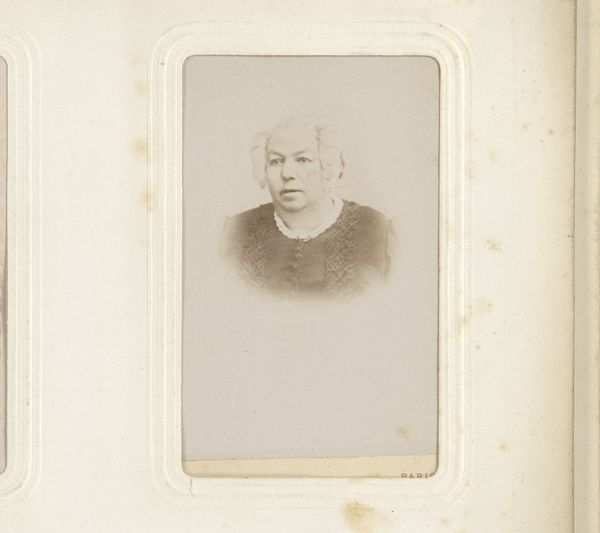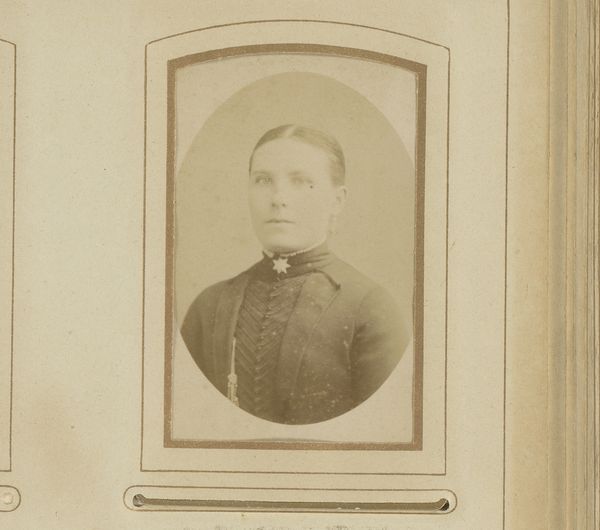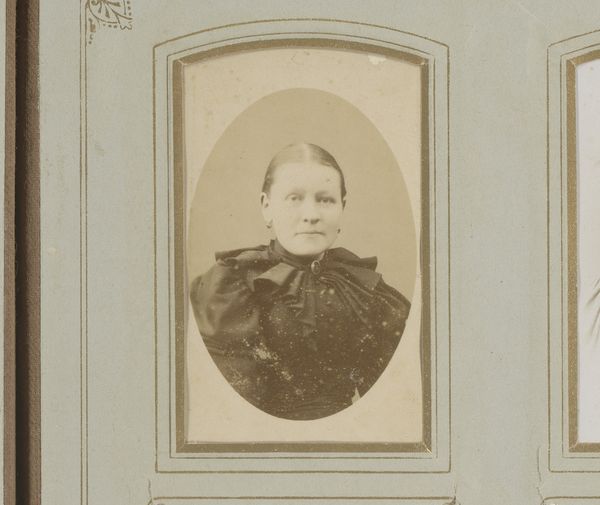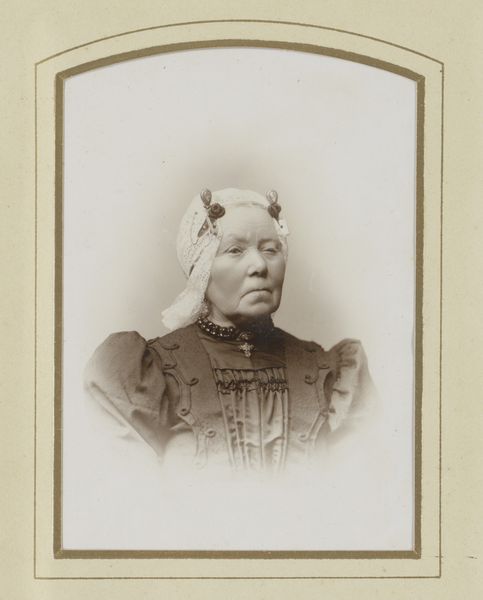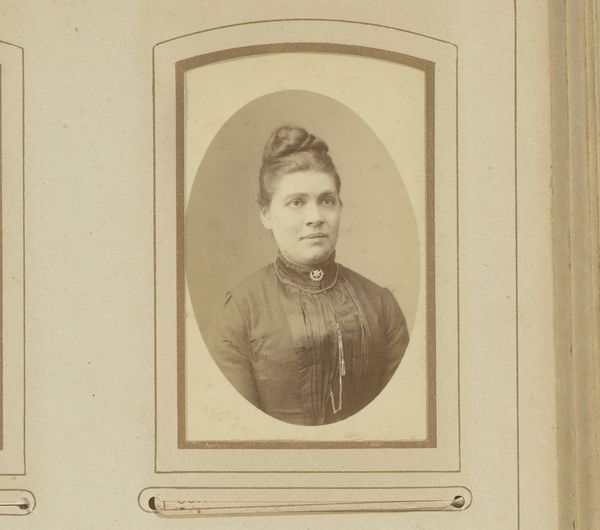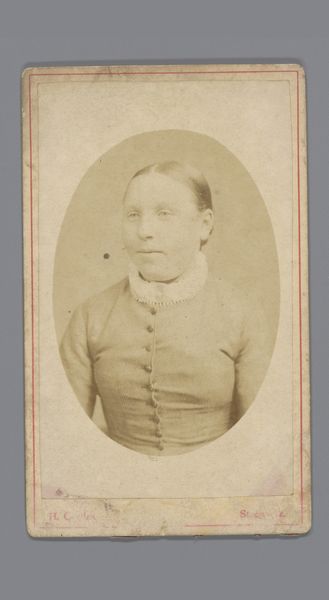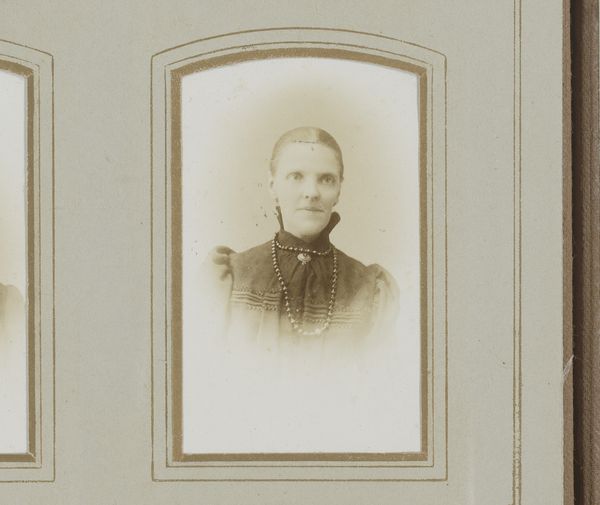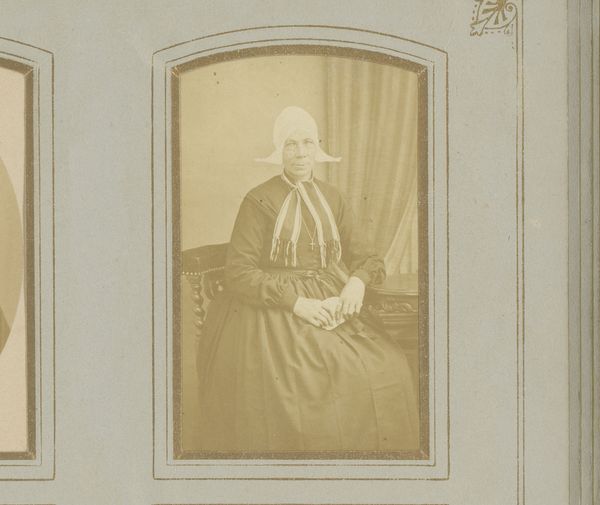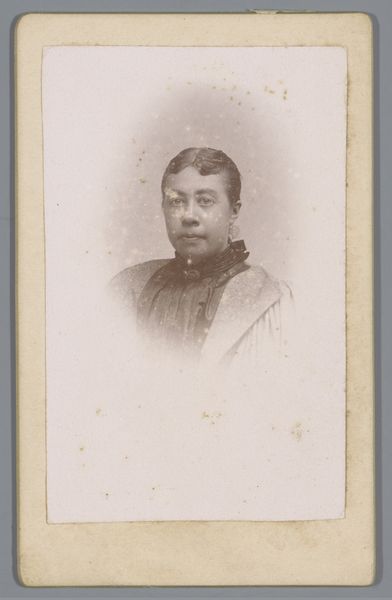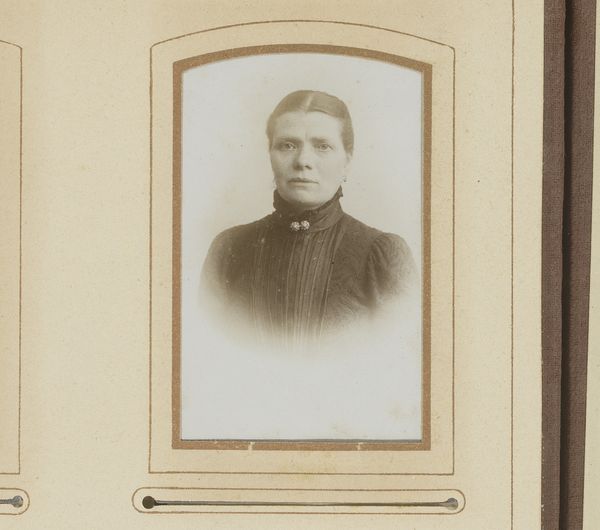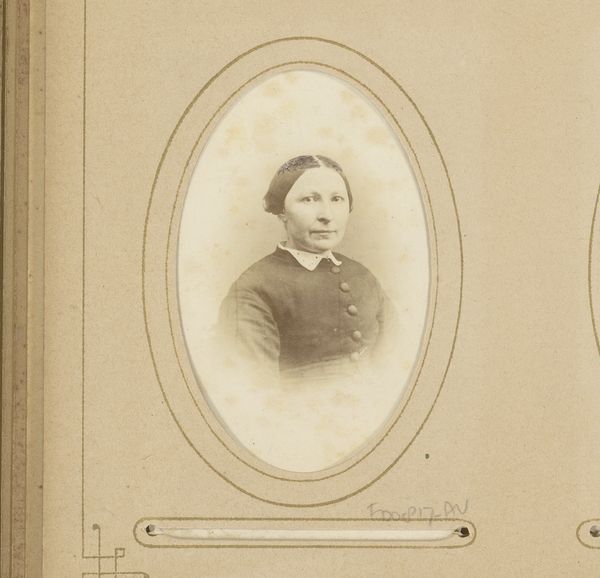
photography
#
charcoal drawing
#
charcoal art
#
photography
#
charcoal
#
realism
Dimensions: height 82 mm, width 51 mm
Copyright: Rijks Museum: Open Domain
Curator: This is "Portret van een vrouw met witte klederdrachtmuts" by Atelier Siewers, dating from around 1880 to 1920. The piece presents us with a photographic portrait of a woman in traditional attire. Editor: The immediate feeling I get is one of stoicism. Her gaze is so direct, almost challenging, but there’s also a vulnerability there, a sense of lives lived. Curator: Absolutely. These studio portraits served a vital social function in that era. They were often commissioned to represent someone’s social standing and family history, reflecting specific community identities and roles. Editor: I’m also thinking about how the very act of sitting for a photograph was likely quite formal. I mean look at the precision of her white bonnet against the simplicity of her dress. Did this adherence to a formal way of life define or restrict identity and social status at the time? Curator: Precisely. The traditional dress is far from an accident. It’s actively constructing a deliberate identity for the sitter—affiliation with community, upholding values of heritage. Also, in constructing a portrait, ateliers like Siewers played a part in the development of photographic portraiture. They contributed to ideas around representation of women, and created enduring images. Editor: It's a poignant reminder of the strength, and potentially also constraints, imposed on women to conform to traditions during this period. You start to question the limitations set around those lives, set around representations of femininity at the time, even in supposedly ‘realist’ artworks. Curator: Yes, the social performance inherent in this image resonates far beyond a mere likeness. Think about the conventions around portraiture in different layers of Dutch society, ideas about ideal femininity, and it opens the work into a wider field. Editor: It does. What this picture really asks us is, ‘what kind of lives are these representations leaving out?’ Curator: Indeed. And by paying close attention to that very tension between appearance and agency, we can unlock stories and perspectives of past lives. Editor: A compelling reflection then, that the silence within a portrait can reveal volumes if we only pause to really look and listen.
Comments
No comments
Be the first to comment and join the conversation on the ultimate creative platform.
